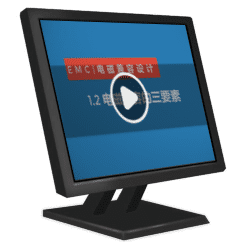- 易迪拓培训,专注于微波、射频、天线设计工程师的培养
ETSI EN 300 328 V1.6.1 (2004-11)
录入:edatop.com 点击:
ETSI EN 300 328 V1.6.1 (2004-11)
Candidate Harmonized European Standard (Telecommunications series)
Electromagnetic compatibility
and Radio spectrum Matters (ERM);
Wideband transmission systems;
Data transmission equipment operating
in the 2,4 GHz ISM band and
using wide band modulation techniques;
Harmonized EN covering essential requirements
under article 3.2 of the R&TTE Directive
Contents
Intellectual Property Rights .................................................................5
Foreword...............................................................................5
Introduction .............................................................................6
1 Scope .............................................................................8
2 References ........................................................................8
3Definitions, symbols and abbreviations ...................................................9
3.1 Definitions...............................................................................9
3.2 Symbols..............................................................................10
3.3 Abbreviations ...........................................................................10
4 Technical specifications .............................................................11
4.1 Environmental profile.....................................................................11
4.2 Modulation ............................................................................11
4.2.1 FHSS modulation......................................................................11
4.2.2DSSS and other forms of modulation ......................................................11
4.3 Technical requirements ..................................................................11
4.3.1Equivalent isotropic radiated power ........................................................11
4.3.1.1 Definition .........................................................................11
4.3.1.2 Limit...........................................................................11
4.3.2Maximum spectral power density.........................................................12
4.3.2.1 Definition .........................................................................12
4.3.2.2 Limit...........................................................................12
4.3.3 Frequency range.....................................................................12
4.3.3.1 Definition .........................................................................12
4.3.3.2 Limit...........................................................................12
4.3.4Transmitter spurious emissions..........................................................12
4.3.4.1 Definition .........................................................................12
4.3.4.2 Limit...........................................................................12
4.3.5Receiver spurious emissions ..............................................................13
4.3.5.1 Definition .........................................................................13
4.3.5.2 Limit...........................................................................13
5Essential radio test suites............................................................13
5.1 Product information.....................................................................13
5.2Requirements for the test modulation.........................................................14
5.3Test conditions, power supply and ambient temperatures.........................................14
5.3.1Normal and extreme test conditions......................................................14
5.3.2 Power sources ........................................................................14
5.3.2.1Power sources for stand-alone equipment................................................14
5.3.2.2Power sources for plug-in radio devices ..................................................14
5.3.3Normal test conditions .................................................................15
5.3.3.1Normal temperature and humidity .....................................................15
5.3.3.2Normal power source ................................................................15
5.3.3.2.1 Mains voltage ...................................................................15
5.3.3.2.2Lead-acid battery power sources used on vehicles ......................................15
5.3.3.2.3Other power sources ............................................................15
5.3.4Extreme test conditions................................................................15
5.3.4.1 Extreme temperatures................................................................15
5.3.4.2Extreme power source voltages.......................................................16
5.3.4.2.1 Mains voltage ...................................................................16
5.3.4.2.2Lead-acid battery power sources used on vehicles ......................................16
5.3.4.2.3Power sources using other types of batteries ............................................16
5.3.4.2.4Other power sources ............................................................16
5.3.4.3Procedure for tests at extreme temperatures.............................................16
5.4Choice of equipment for test suites .........................................................17
ETSI
ETSI EN 300 328 V1.6.1 (2004-11)4
5.4.1 Choice of model.....................................................................17
5.4.2 Presentation.........................................................................17
5.4.3Choice of operating frequencies ...........................................................17
5.5Testing of host connected equipment and plug-in radio devices.....................................17
5.5.1The use of a host or test jig for testing Plug-In radio devices ....................................17
5.5.2Testing of combinations...............................................................18
5.5.2.1Alternative A: General approach for combinations........................................18
5.5.2.2Alternative B: For host equipment with a plug-in radio device ..............................18
5.5.2.3Alternative C: For combined equipment with a plug-in radio device ...........................18
5.5.2.4Alternative D: For equipment with multiple radios .......................................18
5.6Interpretation of the measurement results .....................................................18
5.7Test procedures for essential radio test suites...................................................19
5.7.1 General.............................................................................19
5.7.2Equivalent isotropic radiated power ........................................................19
5.7.2.1 Radiated measurements.............................................................19
5.7.2.2 Conducted measurements.............................................................20
5.7.3Maximum spectral power density.........................................................20
5.7.4 Frequency range.....................................................................22
5.7.4.1Frequency range of equipment using FHSS modulation......................................22
5.7.4.2Frequency range of equipment using other forms of modulation...............................23
5.7.5Transmitter spurious emissions..........................................................24
5.7.6Receiver spurious emissions ..............................................................25
Annex A (normative):The EN Requirements Table (EN-RT) .............................27
Annex B (normative):Test sites and arrangements for radiated measurements...............28
B.1 Test sites.........................................................................28
B.1.1Open air test sites ........................................................................28
B.1.2 Anechoic chamber .......................................................................29
B.1.2.1 General.............................................................................29
B.1.2.2 Description..........................................................................29
B.1.2.3Influence of parasitic reflections...........................................................29
B.1.2.4Calibration and mode of use ..............................................................30
B.2 Test antenna.......................................................................31
B.3 Substitution antenna ................................................................32
Annex C (normative):General description of measurement ................................33
C.1Conducted measurements and use of test fixture ............................................33
C.2 Radiated measurements..............................................................33
C.3 Substitution measurement .............................................................34
Annex D (informative):Bibliography...................................................36
Annex E (informative):The EN title in the official languages ................................37
History ................................................................................38
en_300328v010601p.[bbs.rfeda.cn].rar (182 K)
Candidate Harmonized European Standard (Telecommunications series)
Electromagnetic compatibility
and Radio spectrum Matters (ERM);
Wideband transmission systems;
Data transmission equipment operating
in the 2,4 GHz ISM band and
using wide band modulation techniques;
Harmonized EN covering essential requirements
under article 3.2 of the R&TTE Directive
Contents
Intellectual Property Rights .................................................................5
Foreword...............................................................................5
Introduction .............................................................................6
1 Scope .............................................................................8
2 References ........................................................................8
3Definitions, symbols and abbreviations ...................................................9
3.1 Definitions...............................................................................9
3.2 Symbols..............................................................................10
3.3 Abbreviations ...........................................................................10
4 Technical specifications .............................................................11
4.1 Environmental profile.....................................................................11
4.2 Modulation ............................................................................11
4.2.1 FHSS modulation......................................................................11
4.2.2DSSS and other forms of modulation ......................................................11
4.3 Technical requirements ..................................................................11
4.3.1Equivalent isotropic radiated power ........................................................11
4.3.1.1 Definition .........................................................................11
4.3.1.2 Limit...........................................................................11
4.3.2Maximum spectral power density.........................................................12
4.3.2.1 Definition .........................................................................12
4.3.2.2 Limit...........................................................................12
4.3.3 Frequency range.....................................................................12
4.3.3.1 Definition .........................................................................12
4.3.3.2 Limit...........................................................................12
4.3.4Transmitter spurious emissions..........................................................12
4.3.4.1 Definition .........................................................................12
4.3.4.2 Limit...........................................................................12
4.3.5Receiver spurious emissions ..............................................................13
4.3.5.1 Definition .........................................................................13
4.3.5.2 Limit...........................................................................13
5Essential radio test suites............................................................13
5.1 Product information.....................................................................13
5.2Requirements for the test modulation.........................................................14
5.3Test conditions, power supply and ambient temperatures.........................................14
5.3.1Normal and extreme test conditions......................................................14
5.3.2 Power sources ........................................................................14
5.3.2.1Power sources for stand-alone equipment................................................14
5.3.2.2Power sources for plug-in radio devices ..................................................14
5.3.3Normal test conditions .................................................................15
5.3.3.1Normal temperature and humidity .....................................................15
5.3.3.2Normal power source ................................................................15
5.3.3.2.1 Mains voltage ...................................................................15
5.3.3.2.2Lead-acid battery power sources used on vehicles ......................................15
5.3.3.2.3Other power sources ............................................................15
5.3.4Extreme test conditions................................................................15
5.3.4.1 Extreme temperatures................................................................15
5.3.4.2Extreme power source voltages.......................................................16
5.3.4.2.1 Mains voltage ...................................................................16
5.3.4.2.2Lead-acid battery power sources used on vehicles ......................................16
5.3.4.2.3Power sources using other types of batteries ............................................16
5.3.4.2.4Other power sources ............................................................16
5.3.4.3Procedure for tests at extreme temperatures.............................................16
5.4Choice of equipment for test suites .........................................................17
ETSI
ETSI EN 300 328 V1.6.1 (2004-11)4
5.4.1 Choice of model.....................................................................17
5.4.2 Presentation.........................................................................17
5.4.3Choice of operating frequencies ...........................................................17
5.5Testing of host connected equipment and plug-in radio devices.....................................17
5.5.1The use of a host or test jig for testing Plug-In radio devices ....................................17
5.5.2Testing of combinations...............................................................18
5.5.2.1Alternative A: General approach for combinations........................................18
5.5.2.2Alternative B: For host equipment with a plug-in radio device ..............................18
5.5.2.3Alternative C: For combined equipment with a plug-in radio device ...........................18
5.5.2.4Alternative D: For equipment with multiple radios .......................................18
5.6Interpretation of the measurement results .....................................................18
5.7Test procedures for essential radio test suites...................................................19
5.7.1 General.............................................................................19
5.7.2Equivalent isotropic radiated power ........................................................19
5.7.2.1 Radiated measurements.............................................................19
5.7.2.2 Conducted measurements.............................................................20
5.7.3Maximum spectral power density.........................................................20
5.7.4 Frequency range.....................................................................22
5.7.4.1Frequency range of equipment using FHSS modulation......................................22
5.7.4.2Frequency range of equipment using other forms of modulation...............................23
5.7.5Transmitter spurious emissions..........................................................24
5.7.6Receiver spurious emissions ..............................................................25
Annex A (normative):The EN Requirements Table (EN-RT) .............................27
Annex B (normative):Test sites and arrangements for radiated measurements...............28
B.1 Test sites.........................................................................28
B.1.1Open air test sites ........................................................................28
B.1.2 Anechoic chamber .......................................................................29
B.1.2.1 General.............................................................................29
B.1.2.2 Description..........................................................................29
B.1.2.3Influence of parasitic reflections...........................................................29
B.1.2.4Calibration and mode of use ..............................................................30
B.2 Test antenna.......................................................................31
B.3 Substitution antenna ................................................................32
Annex C (normative):General description of measurement ................................33
C.1Conducted measurements and use of test fixture ............................................33
C.2 Radiated measurements..............................................................33
C.3 Substitution measurement .............................................................34
Annex D (informative):Bibliography...................................................36
Annex E (informative):The EN title in the official languages ................................37
History ................................................................................38
en_300328v010601p.[bbs.rfeda.cn].rar (182 K)
EMC电磁兼容设计培训套装,视频教程,让您系统学习EMC知识...
射频工程师养成培训教程套装,助您快速成为一名优秀射频工程师...
上一篇:PCB短路
下一篇:pcb emc design guideline Microcontroller Board Layout

